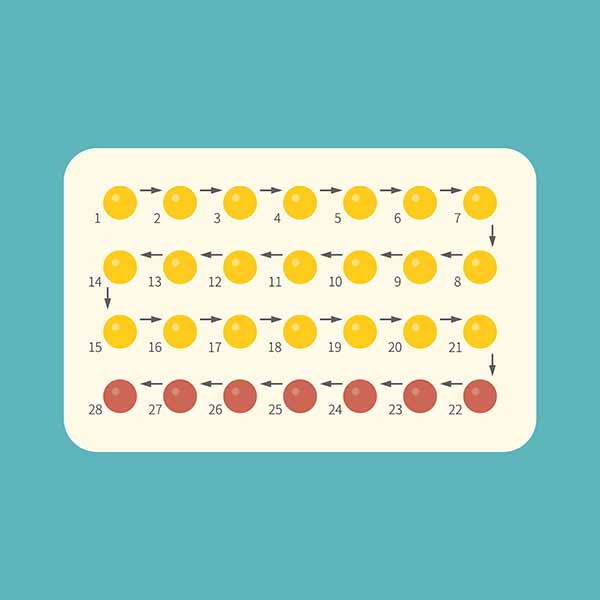What are brown leaks and how are they then distinguished? Let's see together when we need to worry about so-called spotting
Stress, overweight, taking birth control pills, before or after the cycle: the basis of brown discharge of the uterus, technically defined with the term "spotting", there may be causes of various origins and, if in some periods of a woman's life, such as the first stage of a pregnancy, are considered normal, in others they could be a reason for concern. What are and how brown losses are distinguished then? IS when they need to worry us?
Le brown vaginal discharge they are a fairly common phenomenon among women of childbearing age in the days preceding menstruation, during ovulation or in the immediate post-ovarian cycle. Also, about 10% of women who start taking birth control pills would suffer from spotting in the first two to three months, as the body must have time to adapt to contraceptive therapy.
Even 10/15% of women who use the IUD can experience spotting in the first months (Source: Inran).
Index
Spotting, what are brown leaks
From English "to spot"," Stain ", with" spotting "we refer to a 'unusual but modest uterine blood loss usually between menstruations. It is a few drops of dark blood (the color of the leaks becomes darker due to the oxidation of hemoglobin), and a condition that indicates a anomaly in the female apparatus, but which is not always linked to a serious pathology. The phenomenon, however, should not be underestimated in any case.
The presence of brown discharge, in short, should not be alarming: if in conjunction with the pill, the use of the vaginal ring or other types of contraceptives, they are considered "normal" as they are the symptoms of physical adaptation, a sort of conformity between progesterones and estrogens.
In other cases, however, the nature of those dark spots, especially if they are constant or frequent, should be better analyzed, to avoid the presence of a more important pathology. This is why we always recommend that you consult your doctor.
In summary, spotting can be recognized why:
- it differs from menstrual flow (which has a bright red color) and the blood presents a rather color dark
- le traces of blood they are not as abundant as for menstruation but scarce
- it can occur in the days preceding menstruation, during ovulation or immediately after the ovarian cycle period

READ also: MENSTRUAL CYCLE: SYMPTOMS, PHASES AND DURATION
Causes brown leaks
There are a number of causes coinciding with the traces of blood, beyond the normal menstrual flow. There cause which causes brown leaks can be dysfunctional or organic, as well as the period in which it occurs can also differ, since it can be before or after menstruation or during a pregnancy (in the first phase of the gestational period, there may be losses due to the nesting of the egg in the uterus).
Causes of dysfunctional origin:
- eating disorders (obesity, bulimia, anorexia)
- excessive and drastic weight loss diets
- diabetes
- hypercholesterolemia
- premenopause
- incorrect insertion of the contraceptive coil (which among other things also causes pain and reduces the contraceptive effect)
- stress (due to hormonal modulations) and fatigue
Causes of organic origin:
- early menopause
- fibroids
- polyps
- cervical cancer
- ovarian cysts and polycystic ovary syndrome
- thyroid dysfunction
- vaginitis
- endometriosis
- cervical ectopia, a small congenital sore that can affect the cervix

Spotting, brown discharge and ovulation
When spotting and ovulation correspond, uterine blood loss could indicate a complication in the endometrium, that is, of the mucous membrane that surrounds the uterine cavity. Its flaking can cause substantial hormonal modulation which, in turn, could lead to spotting.
If the correspondence between spotting and ovulation is frequent, you may be in presence of ovarian cysts. In general, when it comes to sporadic events, it is ovulation spotting need not worry you more than you should, although you should never take it lightly and maybe make a diagnosis right away.
Therefore, your gynecologist will be able to prescribe you blood tests (blood count, coagulation and hormone dosage), a vaginal ultrasound, a pap test, and then if necessary a colposcopy, a cervical biopsy and a pelvic ultrasound.
READ also: NUTRITION AND LIFESTYLE IN WOMEN WITH ENDOMETRIOSIS
Spotting, premenstrual brown discharge
Until 10 days before the arrival of menstruation, uterine brown discharge should not cause concern if, of course, it is sporadic. Self frequent, instead, they could indicate a 'insufficiency of the corpus luteum (an endocrine gland whose main function is to make progesterone), which may not be able to make the progesterone you need after ovulation.
Also in this case, therefore, it is advisable proceed with the necessary analyzes and routine checks, since the corpus luteum is essential to nourish the endometrium and prepare it to accommodate the implantation of any fertilized egg cell.
READ also: PREMESTRUAL SYNDROME: IT REALLY EXISTS (AND YOU CAN FACE WITH NATURAL REMEDIES)
Spotting and contraception
Birth control pill, patch, coil, vaginal ring: taking them or inserting them can cause spotting, but only in the first months of employment, when that is it is normal for the body to take some time to adapt to the new modulation of estrogen and progestogen.
In the case of brown uterine discharge should persist, then it is good to contact your doctor, which probably will reevaluate hormone dosage and reformulate estrogen therapy: Typically, brown leaks can occur when the estrogen-progestogen dosage of the pill is too low, so the body codes that low hormone level as a time to menstruate.

But be careful: there are cases in which the losses continue and the hormone dosage has nothing to do with it. In these cases, the spotting may result from an irregular pill intake. In fact, it happens that many women forget to take one or more than one pill, thus increasing the risk of spotting, as well as unexpected pregnancy.
Cases of inattention may also exist regarding the copper spiral: about 10/15% of women who use it would have spotting mainly due toincorrect entry. Again, always consult an experienced doctor.
Spotting and pregnancy
In this case we speak of "implantation spotting”And le brown losses coincide with the time when the embryo nestles in the inner wall of the uterus. In fact, they occur at the beginning of pregnancy and their origin is completely physiological: the invasion of the endometrial cavity causes a real lesion of the local tissues and blood vessels and thus a small hemorrhage. That blood that does not reach the endometrium but ends up in the uterine cavity gives rise to implantation losses.
This is a fairly rare but entirely benign phenomenon. Generally, plant losses they appear about four weeks after the last menstruation and can be confused with normal menstruation. Sometimes, they may be limited to pinkish mucous secretions.
Embryo implantation losses last a few days and are not painful, but if this is not the case and the losses become more intense and with a different shade, it is good to consult your gynecologist and understand if:
- occur with a significant delay compared to the date of menstruation, evaluate one possible threat of abortion
- or if it happened on detachment of the trophoblast, a kind of placenta that nourishes the embryo. It is a fairly widespread phenomenon in the first months and which resolves itself without problems, but it must necessarily be taken in time and treated with absolute rest.
About pregnancy and symptoms may also affect you:
- Pregnancy symptoms: the 15 most common
- Menstrual pains: 10 natural remedies to relieve them
- How to reduce menstrual pain with natural remedies
- Natural remedies and therapies for cycle disorders and menopause
How to prevent brown leaks
Proper nutrition e no smoke they must be a must for a woman in perfect health. Also, avoid stress and excessive fatigue and do some healthy exercise.
Typically, these le rules to avoid spotting:
- balanced diet: essential fatty acids (which contain estrogen precursors), iron and magnesium (especially indicated to reduce stress and to control premenstrual syndrome) must not be missing
- eliminate cigarettes, which do not get along with the regularity of the menstrual cycle
- maintenance of ideal body weight based on age
- rest: sleep at least 7/8 hours a night
- sport, or in any case a little healthy movement such as a simple daily walk
- yoga, pilates or stretching, it is now well established that relaxation exercises not only are they a real pain reliever, but they also promote relaxation of the muscles and regularity of the menstrual cycle.


























